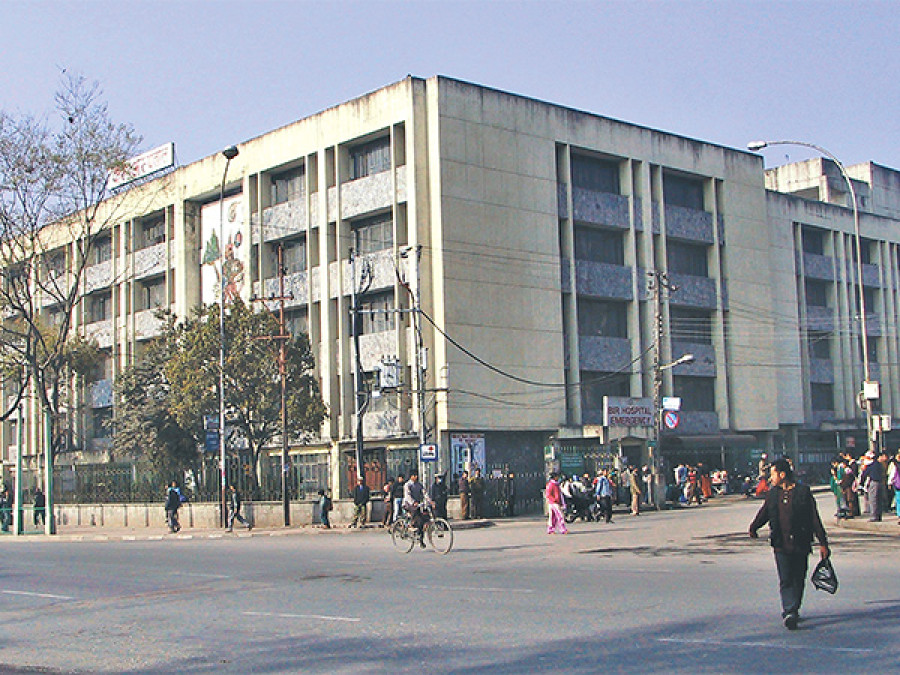Miscellaneous
Medical education in jeopardy
In the immediate aftermath of the earthquakes, which occurred earlier this year, the hospitals in the country struggled to cope with providing services.
Manish Gautam
In the immediate aftermath of the earthquakes, which occurred earlier this year, the hospitals in the country struggled to cope with providing services. Five months on, it’s now the educational services provided by hospitals that are taking a hit: many hospitals aremaking do with infrastructurethat hasn’t been repaired, and they have thus had to cut down on student-intake numbers. Medicaleducation is underpinned by strict guidelines that take into account overall hospital facilities as a salient criterion.
Following the earthquakes of April 25 and May 12, the Patan Academy of Health Sciences’ (PAHS) buildings, for example, suffered quite a bit of damage. All the hospital beds were dragged outside and all the medical services were provided inside temporary tents. Five of its operation theatres were rendered dysfunctional and many other units were running out of triage units. The PAHS still has not fully recovered to its early state, and there is still reconstruction work going on in the hospital.
Recently, even as the hospital was trying to find its legs, a group from the Nepal Medical Council (NMC), the government body that regulates doctors and medical colleges, decided to pay the hospital a visit. Through such visits, the NMC monitors the workings of medical colleges to ensure that medical students are being trained under exceedingly strict protocols. Not surprisingly, PAHS could not pass muster.
On Thursday, the NMC made public the decision of the visit, in a statement that said the council had cut five medical seats at PAHS, capping its enrolment at 55 students for the upcoming January academic session. Besides running a unique programme that takes in substantial numbers of scholarship students on the basis of merit, the PAHS also takes in students from disadvantaged communities. The hospital’s programme was created with the hope that its products would go on to serve in the public sector, and that many who hailed from outlyingdistricts would return to serve in their hometowns. With the cuts in seat numbers, medical experts fear that Nepal, a country already facing a shortfall of doctors will now be even more hard-pressed to bridge the numbers-gap.
Officials at the PAHS say that if only the NMC were to loosen their stringent educational criteria—to take the earthquakes’ effects into consideration—they could go on producing doctors as they used to do earlier. But such provisions will not help burnish the image of a sector that has been tainted by allegations, many of them true, of the sector’s running educational institutions of questionable character.
As with the PAHS, other medical institutions too have not been able to get back on track. Even the National Academy of Medical Sciences (NAMS), Kathmandu, which governs Bir Hospital, the country’s oldest hospital, is struggling to resume its facilities at full capacity. The buildings of the academy that used to house the cancer wards and intensive care units still need massive repairs. Visitors to the hospital are met with a stairwell whose cracks still have not been plastered over and instead of the hundred plus beds that used to have patients on them, today, there are significanlty fewer beds in the wards. The inspection team from NMC visited NAMS recently and decided to suspend for this academic year the super-speciality course the academy runs, while also reducing the student numbers in its post-graduate degree programmes. NAMS is the main institution in the country that produces doctors and specialists who will go on to work in government hospitals: It has special quotas in place for doctors who are practicing in the public sector, and the Ministry of Health and Population often asks NAMS to produce a certain number of doctors to work in public hospitals every year.
This year, for instance, the government had asked NAMS to produce at least 20 general physicians, gynaecologists and anaesthesiologists, but because of the ruined infrastructure, the NMC allowed much fewer students to enrol at the institution.
Slashing enrolment numbers in government medical colleges can lead to many unintended, and for the health sector, unwanted, consequences. Fresh graduates can be de-motivated from joining government services; and given the exorbitant fees charged by private medical colleges, many doctors in the making with the aptitude to tackle the rigours of medical education will have to opt for other majors, or at least wait out a year until the hospitals get back in shape and up their intakes. NAMS is preparing to write to the council, urging it to review its decision, says Dr Ranga Bahadur Basent, Rector of NAMS. “We produce doctors for the government. Just because we have not been able to get everything back in shape after the earthquake does not mean we are incapable of producing doctors,” says Dr Basnet.
“No one wins with all the cuts in medical seats in government schools,” says a third-year orthopaedics resident at NAMS, a young doctor who works in a government hospital. “This is Bir Hospital and its residents are called upon to take care of the majority of the patients.
Fewer residents means the current ones will be overstretched, and patients will have to wait longer to see the doctors.”But the NMC does a have a point too. Dr Krishna Adhikari, spokesperson for the NMC, says that medical institutions cannot afford to take shortcuts.“We want to produce doctors who can actually perform to the standards required of them. Producinghalf-baked products just because we are going through tough times is not an excuse.”




 20.12°C Kathmandu
20.12°C Kathmandu










